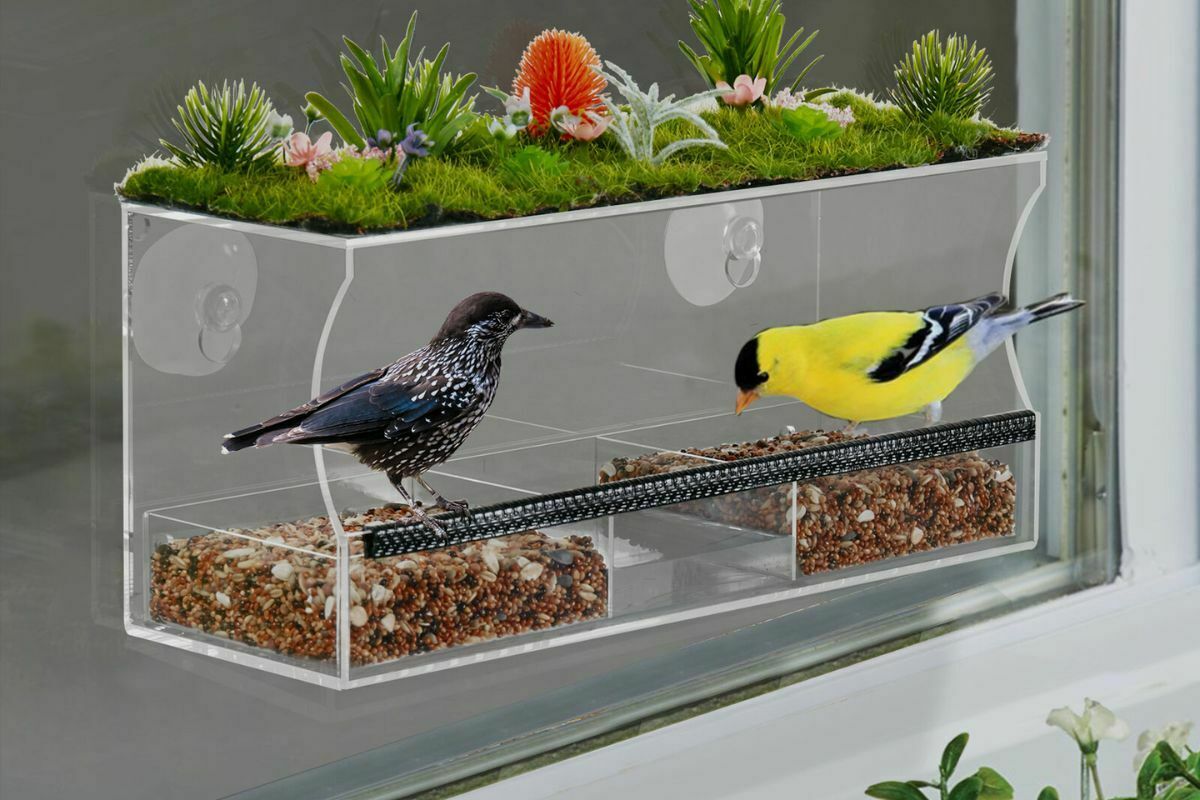Birds are indeed attracted to window feeders! The frequency of their visitation depends on various factors, including the type of feeder, the food offered, and the bird population in the area.
Different bird species are drawn to specific window feeder designs. Therefore, the choice of feeder significantly impacts the birds that come to visit. Additionally, the type of food provided plays a crucial role in attracting a wide range of bird species.
To gain a better understanding of how to attract birds to your window feeder, it is essential to explore the nuances of feeder types, bird diets, and the local bird population. By equipping yourself with this knowledge, you can transform your window into a vibrant hub of bird activity.
Types of Window Feeders
There are several types of window feeders available, each catering to different bird species. The most common type is the suction cup window feeder, which attaches directly to the glass using suction cups. These feeders come in rectangular or circular shapes and provide a platform for birds to perch and feed.
Another option is the hanging window feeder, which hangs outside the window and features a tray or dish for birds to land and feed on. Window box feeders are similar to hanging feeders but are mounted in a box attached to the window. These feeders offer more protection from the elements and provide additional landing space for birds.
Factors Affecting Bird Usage of Window Feeders
Several factors influence whether birds will use a window feeder:
- Feeder Placement: The height of the feeder, its proximity to windows, and nearby vegetation all play a role in attracting birds. Ideally, place the feeder at least 5 feet above the ground and close enough to a window for easy viewing. Nearby trees or shrubs can provide shelter and perching spots for visiting birds.
- Food Selection: Different bird species have unique dietary preferences. Offering a variety of food types, such as seeds, insects, suet, and nectar, will attract a diverse range of birds.
- Local Bird Species: Understanding the bird population in your area is crucial. Tailoring your feeder and food choices to the local bird species increases the likelihood of regular bird visits.
- Safety Concerns: Birds may avoid window feeders if they feel threatened by predators or if there is a risk of colliding with the window. Taking measures to minimize these risks can encourage bird usage.
Choosing the Right Food for Your Window Feeder
The type of food you offer depends on the bird species you want to attract. Birdseed mixes are generally a great choice for most backyard birds. However, if you have specific species in mind, such as cardinals or finches, you may need to provide their preferred food. Specialized birdseed mixes or a combination of different seeds and nuts can cater to their dietary needs. Other food options include suet cakes, mealworms, fruit slices, and cracked corn. If you’re unsure about the best food for birds in your area, seek advice from your local wildlife center.
Birds Likely to Use Window Feeders
The bird species that use window feeders vary depending on location and food offerings. Common backyard species that may visit your window feeder include cardinals, doves, finches, chickadees, blue jays, titmice, woodpeckers, and sparrows. In areas with more exotic bird species, such as hummingbirds or orioles, they may also visit if provided with suitable food.
Advantages of Using Window Feeders
Window feeders offer several benefits for both birds and bird enthusiasts:
- Birdwatching Opportunities: Observing birds up close provides a rewarding and educational experience, fostering a greater appreciation for wildlife.
- Education and Awareness: Window feeders can serve as valuable tools for teaching children and adults about the importance of birds and their role in the ecosystem.
- Supporting Local Bird Populations: Providing food, especially during harsh winter months, helps sustain local bird populations.
- Pest Control: Many bird species, such as insect-eating birds, contribute to pest control in yards or gardens.
Strategies to Increase Bird Usage of Window Feeders
To encourage birds to use your window feeder, consider the following tips:
- Provide a Variety of Food Options: Offering different types of food appeals to a broader range of bird species.
- Regularly Clean and Maintain Feeders: Clean feeders prevent the spread of disease and ensure birds keep coming back.
- Create a Bird-Friendly Environment: Provide natural shelters like trees or shrubs and a water source for birds to drink and bathe.
- Use Bird-Friendly Window Treatments: Apply decals, window film, or screens to reduce window reflections and prevent bird collisions.
Case Studies
Learning from successful and unsuccessful attempts at setting up window feeders can provide valuable insights. Successful setups involve providing a variety of food options, placing the feeder in a safe location, and maintaining a clean and bird-friendly environment. Lessons learned from unsuccessful attempts include poor feeder placement, lack of food variety, and safety concerns. By avoiding these pitfalls, you can increase your chances of success.
Key Takeaway
Attracting birds to a window feeder requires patience and an understanding of local bird behavior. By providing a variety of food options, placing the feeder in an ideal location, and creating a safe and bird-friendly environment, you can enjoy the benefits of birdwatching, education, and supporting local bird populations.
Conclusion
Understanding bird behavior and preferences is crucial for attracting birds to your window feeder. By providing a variety of food options, placing the feeder in an ideal location, and creating a safe and bird-friendly environment, you can enjoy the many benefits of having a window feeder. So, if you’re looking for an up-close view of nature’s feathered friends, consider setting up a window feeder and enjoy the delightful company of these birds. If you have any questions, feel free to ask in the comments section below.
